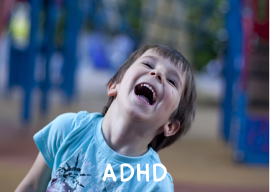ADHD and ADD Treatment for Children

ADHD and ADD presents itself in children in a variety of ways from inattention, hyperactivity, or impulsiveness, inability to focus for extended periods of time, decreased memory, decreased executive functioning or spacing out episodes. The impacts of ADHD can directly affect a child’s social participation (maybe getting labeled as the “bad kid” or the “behavior kid”), success in the academic setting, and overall performance at home, school, sports, and in the community. There are helpful strategies that can be taught to help children be successful, as well as different areas that may be impacting them like primitive reflexes or vision.
Did you know, 60% of children with ADHD behaviors actually have a vision issue
Facts about ADHD/ADD
- Prevalence: ADHD is one of the most common neurodevelopmental disorders in children. It is estimated to affect about 5-10% of children worldwide.
- Diagnosis Age: ADHD is usually diagnosed in childhood, often between the ages of 6 and 12. However, symptoms can be evident as early as preschool age.
- Symptoms: ADHD is characterized by persistent patterns of inattention, hyperactivity, and impulsivity. These symptoms can manifest in various ways, and not every child with ADHD will exhibit the same behaviors.
- Inattentive Type, Hyperactive-Impulsive Type, Combined Type: ADHD is divided into three subtypes based on the predominant symptoms. The inattentive type, hyperactive-impulsive type, and combined type (which involves both inattention and hyperactivity-impulsivity).
- Gender Differences: Boys are diagnosed with ADHD more frequently than girls. However, this may be due to differences in how symptoms present, and girls with ADHD may be underdiagnosed.
- Comorbidity: ADHD often coexists with other conditions such as learning disabilities, anxiety disorders, and mood disorders. Addressing comorbid conditions is essential for effective management.
- Executive Functioning Challenges: Children with ADHD often struggle with executive functions, which include skills like planning, organizing, initiating tasks, and regulating emotions.
- Risk Factors: Genetics play a significant role in the development of ADHD. Children with a family history of ADHD are at a higher risk. Additionally, environmental factors such as prenatal exposure to tobacco smoke, premature birth, and low birth weight may contribute to the risk.
- Impact on School Performance: ADHD can affect academic performance and social interactions in school. Children with ADHD may struggle with completing assignments, following instructions, and maintaining focus in the classroom.
What you can do as parent
Parent education and involvement is essential to make treatment methods work. A well structured environment at home with consistent rules and redirection will help children function more successfully. Some areas you as a parent can address are your child’s daily routine, sleep schedule, and providing them with positive reinforcement and consequences with follow through.
Daily routines:
It is important for children to have predictable routines each day so they know what to expect and what is expected of them. Having a visual schedule with words and pictures can help them adjust and plan for the next activity. You can even go over tomorrows schedule with your child the night before and have them arrange it themselves so when the wake up, they already know what to do first.
Sleep Schedules:
Getting good sleep throughout the night is absolutely imperative to brain development and behavior. Tips and ideas for setting up a bedtime routine: no screen time 30 minutes before bed, take a bath, read a story, use lavender scented lotion, turn down lights, have a snuggle session before bed, make sure bed time is consistently around the same time each night, do not allow video games, TV, phone, tablet in the room at night.
How Polka Dot Kids can help
At Polka Dot Kids, we will assess vision and primitive reflexes to see impact they might be having on your child. From there we will work together to create a treatment plan customized around your child.